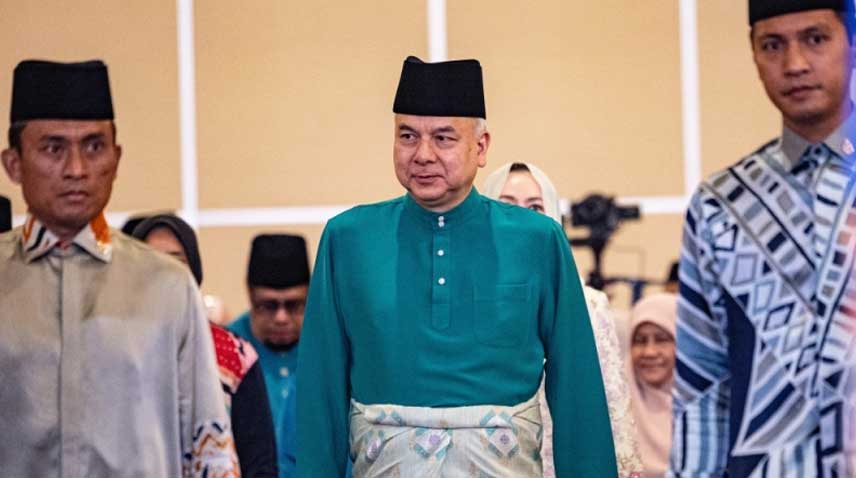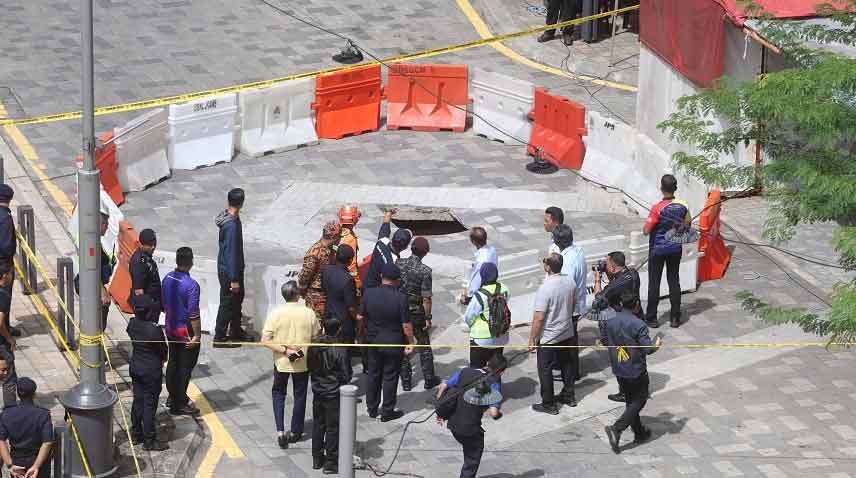
During the past eight months of war, hospitals have come under repeated attack, with Israel claiming they are used as bases by Hamas; something the group denies, as reported by BBC.
But events at al-Shifa – once the biggest and best equipped medical facility in the Gaza Strip – have arguably been the most dramatic.
The two-week surprise raid, launched after Israel said Hamas had regrouped at the site, was described by the Israeli government as "precise and surgical".
With decaying bodies sticking out of the sand piled up by combat bulldozers in the courtyards of al-Shifa, the claim that there had been no civilian casualties was immediately questioned.
In recent weeks, four mass graves have been uncovered at the site, with Palestinian search teams saying that several hundred bodies have been found.
“We’ve extracted martyrs, many of whom are decomposed and completely unidentifiable,” a Palestinian Civil Defence worker, Rami Dababesh told us grimly on 8 May as he stood by a line of white plastic body bags at al-Shifa, wearing a face mask and full protective gear.
“We’ve found corpses of women, children and individuals without heads as well as torn body parts,” he added.
The Civil Defence lacks forensic equipment and expertise, but its teams have been using photos and videos to document the remains. A director, Dr Mohamed Mughir, told us there were suspicious finds; describing how “signs of field executions, binding marks, gunshot wounds to the head and torture marks on the limbs were observed on the bodies of some martyrs".
The UN Security Council has expressed “deep concern” at the discovery of mass graves at both al-Shifa and Nasser hospital in southern Gaza. Along with the US and the European Union, it has called for an independent investigation into possible war crimes.
Some of the corpses found recently at al-Shifa were those of patients who died during Israel’s latest military action. A paramedic involved in the search said some had IV catheters still attached.
On 15 April, the BBC met two men whose dead mothers were last seen being treated at the hospital. Their bodies had just been recovered from a mass grave.
“I came running here when they told me of the grave,” said Mohammed al-Khatib, who had spent days searching for his mother, Khawla. “By the grace of almighty God her body was found.”
Walid Fteima said his elderly mother, Lina Abu Leila, was being treated for malnutrition and severe dehydration when she died. Her body was decomposed, and he could only identify her from injuries she had from an Israeli bombing last year. “[She] had a toe amputated on each foot,” he explained.
After it began its operation at the hospital early on 18 March, the IDF ordered thousands of civilians sheltering there and living in the vicinity to leave and head south. However, it said the hospital could continue to function. By the end of two weeks, only some 140 patients and medics reportedly remained.
Dr Rik Peeperkorn
The WHO's Dr Rik Peeperkorn said those left behind at the hospital ended up in facilities that were "completely unfit for treatment"
The local WHO representative, Dr Rik Peeperkorn, says this group endured “horrific conditions”. After being repeatedly moved around the complex, he says, they “actually ended up in the human resources building which was completely unfit for treatment". Ultimately, he says, 20 patients died.
Several surviving patients – all wounded in previous Israeli strikes – told us they were given only tiny quantities of food such as canned tuna. They said there were severe shortages of drinking water and medication.
“The bombing surrounded us 24/7,” said Mohamed al-Nadeem who is half paralysed. “I am sick and unable to move. I was sleeping on the floor without blankets.”
“There were no dressings or painkillers,” said Rafif Doghmush, 15, whose foot has been amputated.
Three Israeli soldiers were confirmed to have been killed during the two-week long operation.
While Hamas denied using al-Shifa as a base, its officials did not deny the presence of some members inside the complex, indicating that they may have been among displaced people sheltering there.
The Palestinian Civil Defence told us that hundreds of Palestinians were still reported to be missing following the raid in March.
The IDF showed what it said was a fortified 55-metre tunnel on the hospital grounds. This fell short of its initial claims about the extent of hidden tunnels, although later reporting suggested the passage – which was blown up – had actually been longer and was most likely connected to a wider network under Gaza City.
When it returned to the site in March, the IDF suggested its key discoveries were of a different nature, releasing pictures of cash, weapons, and ammunition it said it had found there along with Hamas documents.
In April, when the UN called for “a clear, transparent and credible investigation” of mass graves in Gaza, its spokesman Stephane Dujarric told reporters that more journalists needed to be able to work safely in the territory to report on the facts. During the war, Israel and Egypt have denied free access to foreign media.
Mr Dujarric also said: “It’s important that all forensic evidence be well preserved.” So far, that is proving to be a challenge.
International forensic specialists have been unable to reach Gaza to investigate what happened at al-Shifa. That has left much of the focus locally on registering and identifying the dead where possible, and giving them proper burials.
The disturbance of the mass grave sites, experts say, will ultimately make it much harder to uncover the truth about them.
Meanwhile, although al-Shifa has been largely destroyed, there have been recent efforts to restart very limited medical services on site. These gained momentum as Israel targeted other health facilities particularly Kamal Adwan Hospital in northern Gaza.




